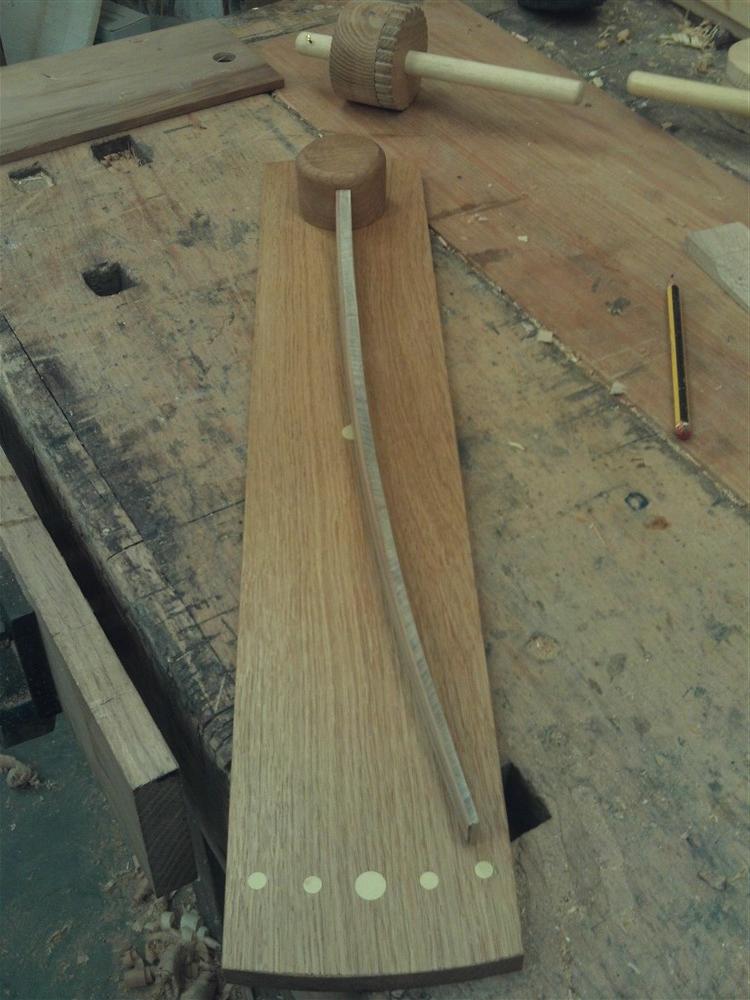For the lettering on the cutting board I made before Christmas I did the following;
I printed out the lettering on paper and stuck it to the timber with Prittstick.
Very carefully and slowly I cut through the paper into the timber with a very very sharp knife. Usual woodworking technique of starting a mm away from the line and then slowly pare back to it. As I knew I was filling the inlay with a tinted epoxy I wasn't worried about making the bottom of the recess smooth and regular. For the bottom of the J which is circular I used an appropriately sized drill bit to drill this out.
Once the outline of the recess was clearly established I removed the remaining paper with a card scraper and then tidied up any rough edges with the knife. I deepened the recess to about 5-6mm and again double checked that the outline was correct. Achieving the depth is the most important to ensure there is sufficient filler material in there to give it some strength and stop it falling out if the wood moves with humidity.
I gave the area a light sanding with 240g on a block to remove any whispers of timber then got set up to fill it. I just used the cheap 5min epoxy from the pound shop and tinted it with black mica powder from Amazon UK. (I looked for the link to the one I bought but couldn't find it, there are loads available though)
I did a fair bit of research before buying the mica powder and this is what I found out. Mica is a naturally occurring material used in the making of cosmetics, therefore it is nonreactive and safe for human contact. It is ground to a very fine powder, this makes it ideal for use as a pigment as it is easily dispersed through the binder material and doesn't cause bubbles or dry spots to form.
So with my epoxy ready to be mixed and the mica powder ready I went and pinched the girlfriends hair dryer, I set this up to warm the timber. Warming the timber up keeps the epoxy warm and less viscous. I mixed the epoxy and then added the mica, only a tiny bit is needed to achieve a solid colour, any more and it'll just make the epoxy to thick. When combining the two epoxy components I tried to fold it together rather than mix it as this reduces the number of bubbles.
Working quickly, I spread the epoxy into the recess and then used the stream of hot air from the hairdryer to push it into all the nooks and crannys, this also reduces the viscosity, allowing it to flow and any air bubbles to rise to the surface. As with any filler I made sure that I had filled it to a mm or two above the finished level.
Once the epoxy was cured I scraped off the bulk of the excess with the card scraper and then sanded it back with 80g until it was all level with the surrounding timber. I worked up the grits to 240g and had a good look at the epoxy surface. I found one small air bubble which hadn't popped so I drilled this out and mixed up another batch to fill it.
When I was finally happy that it was perfect i sanded up to 600g and gave the whole cutting board 3 coats of Osmo oil.



































